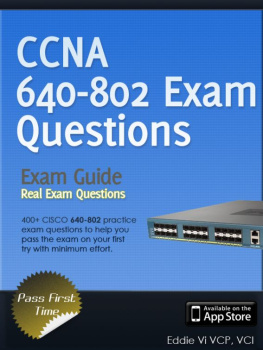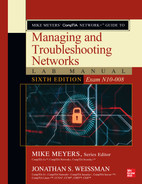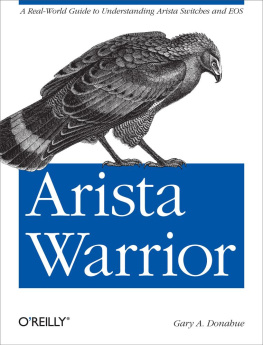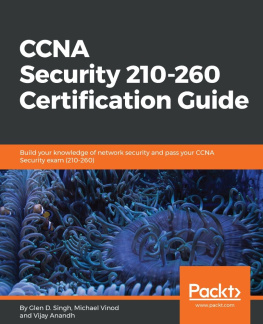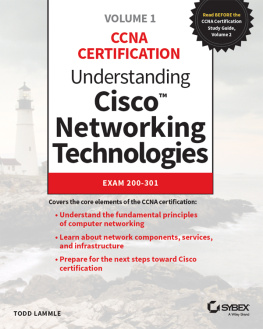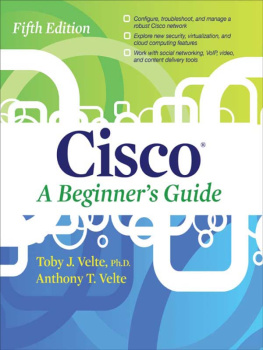Preface
The examples used in this book are taken from my own experiences, as well as from the experiences of those with or for whom I have had the pleasure of working. Of course, for obvious legal and honorable reasons, the exact details and any information that might reveal the identities of the other parties involved have been changed.
Cisco equipment is used for the examples within this book, and, with very few exceptions, the examples are TCP/IP-based. You may argue that a book of this type should include examples using different protocols and equipment from a variety of vendors, and, to a degree, that argument is valid. However, a book that aims to cover the breadth of technologies contained herein, while also attempting to show examples of these technologies from the point of view of different vendors, would be quite an impractical size.
The fact is that Cisco Systems (much to the chagrin of its competitors, I'm sure) is the premier player in the networking arena. Likewise, TCP/IP is the protocol of the Internet, and the protocol used by most networked devices. Is it the best protocol for the job? Perhaps not, but it is the protocol in use today, so it's what I've used in all my examples. Not long ago, the Cisco CCIE exam still included Token Ring Source Route Bridging, AppleTalk, and IPX. Those days are gone, however, indicating that even Cisco understands that TCP/IP is where everyone is heading.
WAN technology can include everything from dial-up modems (which, thankfully, are becoming quite rare in metropolitan areas) to ISDN, T1, DS3, SONET, and so on. We will cover many of these topics, but we will not delve too deeply into them, for they are the subject of entire books unto themselvessome of which may already sit next to this one on your O'Reilly bookshelf.
Again, all the examples used in this book are drawn from real experiences, most of which I faced myself during my career as a networking engineer, consultant, manager, and director. I have run my own company, and have had the pleasure of working with some of the best people in the industry, and the solutions presented in these chapters are those my teams and I discovered or learned about in the process of resolving the issues we encountered.
Who Should Read This Book
This book is intended for use by anyone with first-level certification knowledge of data networking. Anyone with a CCNA or equivalent (or greater) knowledge should benefit from this book. My goal in writing Network Warrior is to explain complex ideas in an easy-to-understand manner. While the book contains introductions to many topics, you can also consider it as a reference for executing common tasks related to those topics. I am a teacher at heart, and this book allows me to teach more people than I'd ever thought possible. I hope you will find the discussions I have included both informative and enjoyable.
I have noticed over the years that people in the computer, networking, and telecom industries are often misinformed about the basics of these disciplines. I believe that in many cases, this is the result of poor teaching, or the use of reference material that does not convey complex concepts well. With this book, I hope to show people how easy some of these concepts are. Of course, as I like to say, "It's easy when you know how," so I have tried very hard to help anyone who picks up my book understand the ideas contained herein.
If you are reading this, my guess is that you would like to know more about networking. So would I! Learning should be a never-ending adventure, and I am honored that you have let me be a part of your journey. I have been studying and learning about computers, networking, and telecom for the last 24 years, and my journey will never end.
This book attempts to teach you what you need to know in the real world. When should you choose a layer-3 switch over a layer-2 switch? How do you tell if your network is performing as it should? How do you fix a broadcast storm? How do you know you're having one? How do you know you have a spanning-tree loop, and how do you fix it? What is a T1, or a DS3 for that matter? How do they work? In this book, you'll find the answers to all of these questions, and many, many more. Network Warrior includes configuration examples from real-world events and designs, and is littered with anecdotes from my time in the fieldI hope you enjoy them.
Conventions Used in This Book
The following typographical conventions are used in this book:
ItalicUsed for new terms where they are defined, for emphasis, and for URLs
Constant widthUsed for commands, output from devices as it is seen on the screen, and samples of Request for Comments (RFC) documents reproduced in the text
Constant width italicUsed to indicate arguments within commands for which you should supply values
Constant width boldUsed for commands to be entered by the user and to highlight sections of output from a device that have been referenced in the text or are significant in some way
Tip
Indicates a tip, suggestion, or general note
Warning
Indicates a warning or caution
Using Code Examples
This book is here to help you get your job done. In general, you may use the code in this book in your programs and documentation. You do not need to contact us for permission unless you're reproducing a significant portion of the code. For example, writing a program that uses several chunks of code from this book does not require permission. Selling or distributing a CD-ROM of examples from O'Reilly books does require permission. Answering a question by citing this book and quoting example code does not require permission. Incorporating a significant amount of example code from this book into your product's documentation does require permission.
We appreciate, but do not require, attribution. An attribution usually includes the title, author, publisher, and ISBN. For example: " Network Warrior by Gary A. Donahue. Copyright 2007 O'Reilly Media, Inc., 978-0-596-10151-0."
If you feel your use of code examples falls outside fair use or the permission given above, feel free to contact us at .
We'd Like to Hear from You
Please address comments and questions concerning this book to the publisher:
| O'Reilly Media, Inc. |
| 1005 Gravenstein Highway North |
| Sebastopol, CA 95472 |
| 800-998-9938 (in the United States or Canada) |
| 707-829-0515 (international or local) |
| 707-829-0104 (fax) |
We have a web page for this book, where we list errata, examples, and any additional information. You can access this page at:
| http://www.oreilly.com/catalog/9780596101510 |
To comment or ask technical questions about this book, send email to:
For more information about our books, conferences, Resource Centers, and the O'Reilly Network, see our web site at:
Safari Enabled
When you see a Safari Enabled icon on the cover of your favorite technology book, that means the book is available online through the O'Reilly Network Safari Bookshelf.


